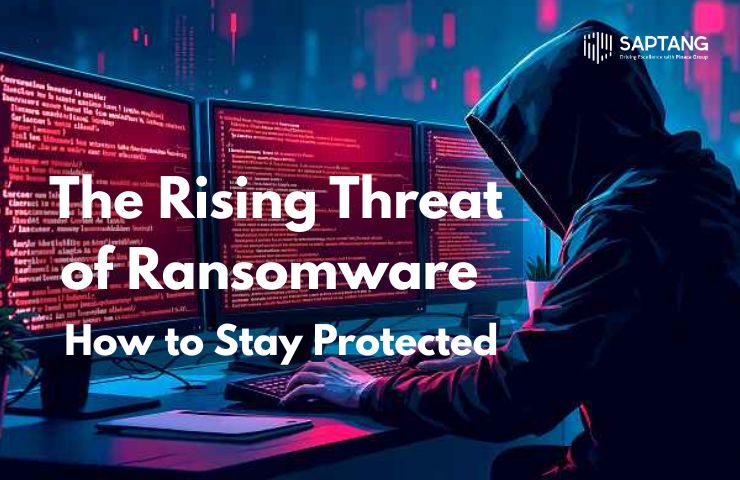
Not long ago, the idea of someone locking up our data and demanding money to return it sounded like something out of a movie. But today, it’s become an everyday risk. Whether we’re individuals using personal devices or organizations handling sensitive operations, threat of ransomware has become one of the most serious cybersecurity threats we face.
We’ve all seen the headlines—hospitals brought to a standstill, schools forced offline, entire city governments paralyzed. Ransomware isn’t just a technical problem anymore. It’s a business disruption, a national security issue, and in some cases, a matter of life and death.
So, what exactly is ransomware? How does it work? And more importantly—what can we do to stay protected?
At its core, ransomware is a type of malicious software designed to block access to a computer system or files until a ransom is paid. In most cases, attackers encrypt the victim’s data and demand payment—usually in cryptocurrency—in exchange for the decryption key.
Sometimes, the threat goes a step further. Cybercriminals not only lock your data but also steal it and threaten to leak it publicly if the ransom isn’t paid. This double-extortion tactic has become increasingly common.
Several factors are driving the rise in ransomware attacks:
Low risk, high reward for attackers. Ransomware groups can operate across borders, often in jurisdictions that don’t pursue cybercrime.
Wider digital exposure. As more of our work, communication, and records go online, attackers have more targets and more ways to get in.
Availability of ransomware-as-a-service (RaaS). Even less-skilled criminals can now rent ransomware tools, making attacks easier to launch.
We’ve seen global organizations, healthcare systems, and even small local businesses fall victim to these attacks. In many cases, operations grind to a halt, reputations suffer, and recovery can take weeks or months—even with backups in place.
While the technical details may vary, the most common paths ransomware takes are surprisingly simple:
Phishing Emails: A staff member clicks a link or downloads an attachment from a seemingly legitimate email.
Weak Passwords: Attackers use stolen or easily guessed passwords to log in remotely.
Unpatched Systems: Outdated software creates security holes attackers can exploit.
Compromised Remote Desktop Protocols (RDP): Remote access services, if not secured, can serve as an easy entry point.
Third-Party Vendors: Supply chain attacks exploit the trust placed in software providers or service partners.
Attackers are always looking for the weakest link—and it’s often human, not just technical.
We don’t need to look far for examples. In recent months:
A major U.S. healthcare provider had to divert patients and cancel surgeries after a ransomware attack locked its systems.
A ransomware group took credit for shutting down parts of a European airport’s digital infrastructure.
Several small businesses lost years’ worth of records—some never fully recovered.
These aren’t just statistics—they’re stories of real people facing sudden chaos and loss.
Ransomware defense isn’t about buying a single tool or installing one piece of software. It’s about building a culture of awareness, resilience, and preparation.
Here’s what helps:
Backups are often the difference between recovery and disaster. But they must be stored offline or off-network, so attackers can’t access them during the attack.
Apply security patches regularly. Attackers often exploit known vulnerabilities that haven’t been fixed yet.
Enforce strong password policies and enable multi-factor authentication (MFA)—especially for remote access and admin accounts.
Invest in email security tools, but also train teams to spot suspicious emails. One accidental click can be all it takes.
Not everyone needs access to everything. Restrict permissions to only what’s necessary. This limits the damage if an account is compromised.
When an attack happens, confusion is your enemy. A clear, tested response plan ensures the right steps are taken quickly.
One overlooked factor in cybersecurity is culture. Ransomware defense is not just an IT issue—it’s a business continuity issue. Leaders need to champion awareness, invest in defenses, and foster a blame-free environment where staff feel comfortable reporting mistakes.
Blaming employees for clicking on the wrong link doesn’t solve the problem. Teaching, preparing, and supporting them does.
Ransomware isn’t going away. In fact, it’s likely to become more targeted, more damaging, and more complex. But the good news is that we’re not helpless.
By understanding how these attacks work and taking simple, steady steps to prepare, we can dramatically reduce the risk and impact. We don’t need to be perfect—just proactive.
Cybersecurity is a shared responsibility. Whether we’re running a small team, a large organization, or simply taking care of our personal devices, we all play a role in staying safe online.